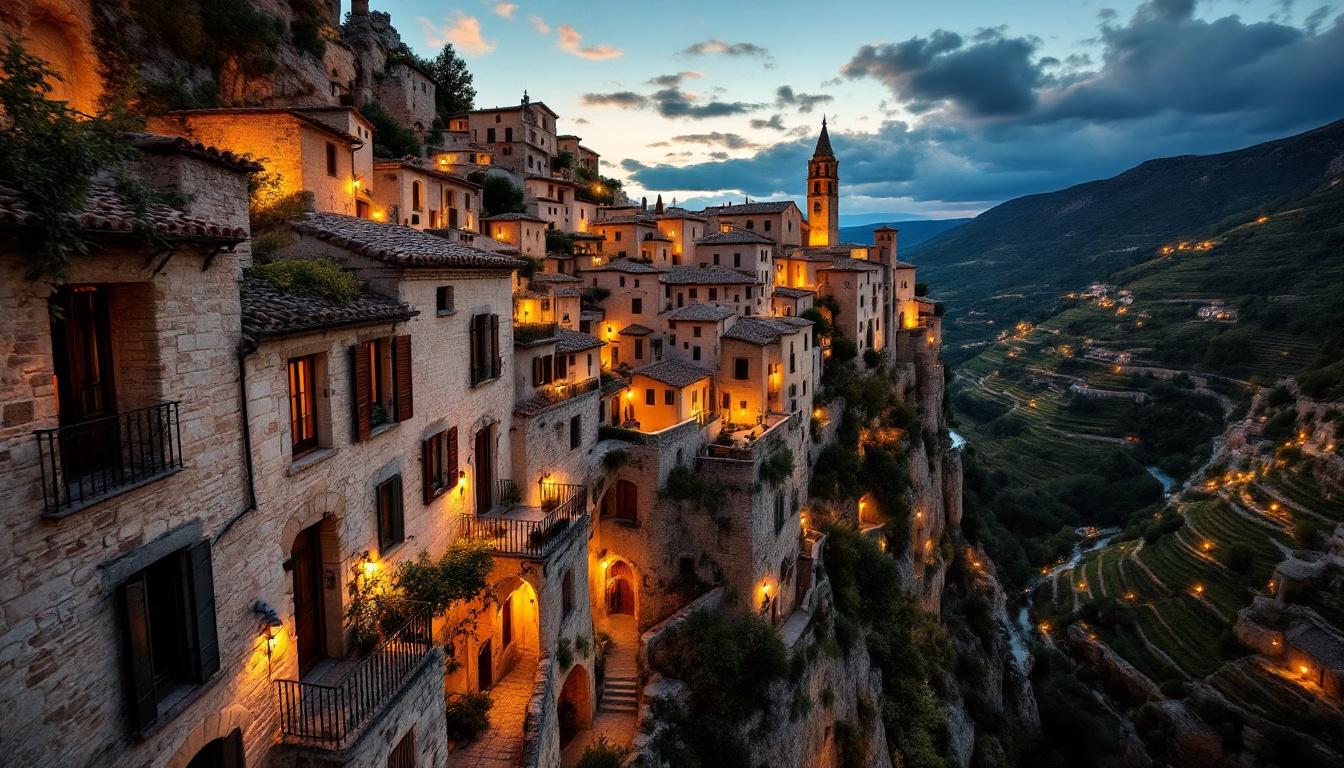The cobblestone streets of Minerve tell a different story than most French villages. While tourists flood nearby Carcassonne by the thousands, this 118-resident Cathar stronghold in Hérault has quietly implemented measures to keep Instagram crowds at bay.
Local residents have watched other medieval villages transform into theme parks. They’ve seen authentic bakeries replaced by souvenir shops, narrow streets clogged with tour buses, and centuries-old traditions buried under selfie sticks.
That’s why Minerve’s locals don’t just welcome any visitor. They’ve created subtle barriers that preserve their 800-year-old way of life while allowing respectful travelers to experience genuine medieval France.
The protective measures locals quietly enforce
Vehicle restrictions that filter casual tourists
Minerve’s residents implemented a strict car ban for non-residents that forces visitors to park outside the village walls. The steep, narrow cobblestone paths aren’t just historic charm—they’re a natural deterrent against large tour groups and casual visitors seeking easy Instagram shots.
Limited infrastructure that maintains authenticity
Unlike commercialized Cathar sites, Minerve’s shops operate on local schedules, not tourist demands. Many artisan workshops close during peak hours, and the village’s single restaurant prioritizes regulars over passing visitors. This isn’t poor service—it’s intentional cultural preservation.
Why residents guard their medieval fortress so fiercely
The lessons learned from Carcassonne’s transformation
Minerve locals witnessed nearby Carcassonne’s evolution from authentic fortress to tourist attraction. The UNESCO site now welcomes 4 million visitors annually, transforming local businesses into souvenir vendors and displacing long-term residents with short-term rental properties.
Protecting the last intact Cathar siege site
This village represents the only remaining authentic Cathar siege location from 1210, where 140 Cathars chose death over conversion. Locals understand they’re guardians of irreplaceable history that can’t survive mass tourism’s impact on narrow medieval streets and fragile stone structures.
The authentic medieval experience locals want to preserve
Wine culture that predates tourism
Minerve sits at the heart of the Minervois wine region, where local vignerons have produced wine for over 2,000 years. The village’s cave coopérative and family-owned domains serve locals first, tourists second. During harvest season in August, grape-picking takes priority over visitor services.
Artisan traditions passed down through generations
The village’s blacksmith still forges tools for local farmers. The baker creates bread for 118 residents, not tour groups. These aren’t tourist attractions—they’re living traditions that locals protect by limiting commercial pressure to scale up for visitor demand.
How to visit respectfully if locals allow it
Timing that respects local rhythms
Visit during late September through early November when harvest activities take precedence and tourist numbers naturally decrease. Avoid peak summer months when locals focus on essential village activities rather than visitor services.
Supporting authentic local businesses
Purchase wine directly from village producers like traditional Languedoc wineries, eat at the single family-run restaurant, and respect shop hours that prioritize local customers. Skip the souvenir hunting that locals actively discourage.
Minerve’s residents have created something remarkable: a medieval village that functions as a living community first, tourist destination second. Their protective measures aren’t hostile—they’re necessary preservation of authentic French village life that mass tourism has erased elsewhere.
The 118 residents of Minerve offer a glimpse into how medieval France actually functioned before tour buses and gift shops. Visit respectfully, and you might understand why they guard this treasure so carefully.
Frequently asked questions about visiting Minerve
Can I drive into the village center?
No, Minerve maintains strict vehicle restrictions for non-residents. You’ll park outside the village walls and walk the steep cobblestone paths, which takes about 10 minutes but filters out casual tourists.
Are shops and restaurants always open for tourists?
Local businesses operate on village schedules, not tourist demands. Many close during peak afternoon hours or prioritize local customers. This isn’t poor service—it’s intentional preservation of authentic village rhythms.
What makes Minerve different from other French medieval villages?
Minerve remains a functioning village where 118 residents live year-round, unlike many medieval sites that exist primarily for tourism. The wine culture, artisan traditions, and daily village life continue as they have for centuries.
